Challenges and solutions to implementing the idea of teacher leadership in teaching and learning in a northern district college in Bangladesh
Keywords:
Undergraduate, Teaching, Teacher Leadership, Government College, BangladeshAbstract
This study tries to find out the existing scenery of the implementation of teacher leadership in a northern district government college in Bangladesh. Furthermore, the nature of student teacher relationships and the challenges and solutions for implementing the idea of teacher leadership at the undergraduate level is eyed by the researcher. A qualitative approach has been applied in the research where both teachers and students participated in semi structured interviews and focus group discussion. Significantly, Semi-structured interview was taken with five teachers from three faculties namely science, arts and social science, and business studies. Simultaneously, thirty students (15 male and 15 female) from the undergraduate level participated in the focus group discussion separately. A purposive sampling method was used to select participants. Data was analysed after collecting from both teachers and students. Lack of teacher leadership exercise, limited teachers, lack of pedagogical training, excessive pressure of official work, and lack of mental satisfaction in the job are the barriers to implementing the teacher leadership idea. Creation of sound learning atmosphere, use of internal funds, arrangement of training & and seminars, special care for weak students, achieving credibility and trust, professional learning community, teaching award action research activity and mentoring the activities, the idea of teacher leadership can be established at the undergraduate level in the researched college.
References
Ajaib, A., & Yousaf, I. (2018). Comparative Study on University Teachers’ Attitude Towards Weak and Bright Students. Faculty of Social Sciences and Humanities University of Wah, Wah Cantt, 23.
Aldridge, J. M., Fraser, B. J., & Sebela, M. P. (2004). Using teacher action research to promote constructivist learning environments in South Africa. South African Journal of Education, 24(4), 245-253.
Alkutich, M. E. (2017). Investigating the Leadership Role of Head of Departments of
Aruzie, R. S., & Adjei, A. (2019). The Impact of Leadership Styles on Teaching And Learning Outcomes: A Case Study Of Selected Senior High Schools In The Nkronza Districts Of Brong Ahafo Region In Ghana, 06(12), 795-825.
Bagucanskyte, M., & Kaminskiene, L. (2016). Educational leadership in higher education: a scientific literature review. IOSR journal of humanities and social science. Dasna: International Organization of Scientific Research, 2016, Vol. 21, Iss. 3. p. 93-98.
Barrett, C., & Breyer, R. (2014). The influence of effective leadership on teaching and learning. Journal of Research Initiatives, 1(2), 3.
Berry, B., Daughtrey, A., & Wieder, A. (2010). Teacher leadership: Leading the way to effective teaching and learning. Center for Teaching Quality.
Boyd-Dimock, V., & McGree, K. (1995). Leading change from the classroom: Teachers as leaders.Issues about change, 4(4).
Cera, J. (2013). Teacher Leadership in Art Education Preparation. Visual Arts Research 39(2), 93-103.
Coffie, I. S. (2019). Transforming teacher education and learning in Ghana: The impact of continuous professional development on physics teaching at the colleges of education. International Journal of Research and Scientific Innovation, 6(6), 201-206.
Coggins, C., & McGovern, K. (2014). Five goals for teacher leadership. Phi Delta Kappan, 95(7), 15-21.
Collins, J. P. (2014). Leadership and change in twenty-first century higher education. BioScience, 64(7), 561-562.
Cosenza, M. N. (2015). Defining Teacher Leadership: Affirming the Teacher Leader Model Standards. Issues in teacher education, 24(2), 79-99.
Curtis, R. (2013). Finding a new way: Leveraging teacher leadership to meet unprecedented demands. Aspen Institute.
Dauksas, L., & White, J. (2010). Should I stay or should I go? How teacher leadership can improve teacher retention. AASA Journal of Scholarship and Practice, 7(2), 27-32.
Davies, J., Hides, M. T., & Casey, S. (2001). Leadership in higher education. Total Quality Management, 12(7-8), 1025-1030.
Davis, S. E., & Dargusch, J. M. (2015). Feedback, iterative processing and academic trust-teacher education students' perceptions of assessment feedback. Australian Journal of Teacher Education, 40(1), 10.
Dozier, T. K. (2007). Turning good teachers into great leaders. Educational Leadership, 65(1), 54-59.
Duval, J. P. (2017). Teacher Leadership in the Context of International Schools: The Key Attributes and Development of Teacher Leaders.
Fahimirad, M., Idris, K., & Kotamjani, S. S. (2016). Effective academic leadership of learning and teaching in Malaysian higher education. International Journal of Human Resource Studies, 6(4), 67-83.
Frost, D. (2008). ‘Teacher leadership’: values and voice. School Leadership and Management, 28(4), 337-352.
Gibbs, G., Knapper, C., & Piccinin, S. (2008). Disciplinary and contextually appropriate approaches to the leadership of teaching in research‐intensive academic departments in higher education. Higher Education Quarterly, 62(4), 416-436.
Hamachek, D. (1999). Effective teachers: What they do, how they do it, and the importance of self-knowledge. The role of self in teacher development, 189.
Harris, A. (2003). Teacher leadership as distributed leadership: heresy, fantasy or possibility? School leadership & management, 23(3), 313-324.
Harris, A., & Jones, M. (2019). Teacher leadership and educational change, 39 (2), 123-126.
Harris, A., & Muijs, D. (2002). Teacher leadership: Principles and practice.
Harrison, C., & Killion, J. (2007). Ten roles for teacher leaders. Educational leadership, 65(1), 74-77.
Hellner, J. (2008). The Professional Learning Community: A Fulcrum of Change. Kairaranga, 9(1), 50-54.
Hofmeyer, A., Sheingold, B. H., Klopper, H. C., & Warland, J. (2015). Leadership in learning and teaching in higher education: Perspectives of academics in non-formal leadership roles. Contemporary Issues in Education Research, 8(3). 181-192.
Hord, S. M. (2009). Professional learning communities. Journal of Staff Development, 30(1), 40-43.
Huling, L., & Resta, V. (2001). Teacher Mentoring as Professional Development. ERIC Digest.
Jackson, T., Burrus, J., Bassett, K., & Roberts, R. D. (2010). Teacher leadership: An assessment framework for an emerging area of professional practice. ETS Research Report Series, 2010(2), i-41.
Kapur, D. R. (2003). Educational Leadership. The Review of Higher Education, 26(4), 1-12.
Khan, H. A. (2016). Impact of educational leadership on effective educational management in higher education institutions of Pakistan. Indian Journal of Commerce and Management Studies, 7(1), 75-84.
Killion, J., Harrison, C., Colton, A., Bryan, C., Delehant, A., & Cooke, D. (2016). A Systemic Approach to Elevating Teacher Leadership. Learning Forward.
King, F. (2011). The role of leadership in developing and sustaining teachers' professional learning. Management in education, 25(4), 149-155.
Lamb-Sinclair, A. (2019). Why we need to rethink teacher leadership. Education Week TEACHER.
Lumad, R. I. (2017). Ensuring educational leadership in the creation and leadership of schools. Koers, 82(3), 1-6.
Mahmud, K. (2010). E-learning for tertiary level education in least developed countries: Implementation obstacles and way outs for Bangladesh. International Journal of Computer Theory and Engineering, 2(2), 150-155.
McGlynn, A. P. (1996). Classroom Atmosphere in College: Improving the Teaching/Learning Environment.
McNaught, C., & Anwyl, J. (1992). Awards for teaching excellence at Australian universities. Higher Education Review, 25(1), 31.
Michael, N., Zaman, M., & Gorpe, T. S. (2018). A case study of developing leadership and creativity skills in higher education (HE) students. E-review of Tourism Research, 15.
Mohammad Jahangir Hossain Mojumder. (2021). The Effects of Teachers’ Training on Professional Development and Teaching Practice: A Case Study of Two Selected Colleges in Bangladesh. PanAfrican Journal of Governance and Development (PJGD), 2(1), 148-179. https://doi.org/10.46404/panjogov.v2i1.2917
Monem, M., & Muhammad, H. (2010). Higher Education in Bangladesh: Status, Issues and Prospects. Pakistan Journal of Social Sciences (PJSS), 30(2).
Nurutdinova, A. R., Perchatkina, V. G., Zinatullina, L. M., Zubkova, G. I., & Galeeva, F. T. (2016). Innovative teaching practice: Traditional and alternative methods (challenges and implications). International journal of environmental and science education, 11(10), 3807-3819.
O'Dell, I., & Hwang, G. Y. (2008). Teaching leadership with a global perspective: A case study. Journal of College and Character, 10(1).
O'Hair, M. J., & Reitzug, U. C. (1997). Teacher leadership: In what ways? For what purpose? Action in teacher education, 19(3), 65-76
Poddar, R. (2017, October 31). Teacher Development for Quality Education. Daily Sun. Sun. Retrieved on June 3, 2020, from the Daily Sun website: https://www.daily-sun.com/printversion/details/265138/Teacher-Development-for-Quality-Education
Politis, J. D. (2001). Dispersed leadership predictor of knowledge acquisition. In Proceedings of The 2nd European Conference on Knowledge Management, November, The IEDC-Bled School of Management, Bled, Slovenia (pp. 449-58).
Post, R. (2017). Leadership in educational institutions: Reflections of a law school dean. Stan. L. Rev., 69, 1817-1829.
Printy, S. M., & Marks, H. M. (2006). Shared leadership for teacher and student learning. Theory into Practice, 45(2), 125-132.
Quick, P. M. (2013). Moral leadership: a model for educational leaders in the 21st century.
Rahman, M. M. (2019). Review of Policy and Development of Teacher Education in Bangladesh in the Perspective of 21st Century Education.
Rahman, S. S. (2015). Job Satisfaction: A Study of Government College Teachers in Bangladesh. Job satisfaction
Raqib, A. A. (2019). Innovations in Teacher Training at Higher Education in Bangladesh. Social Science Review [The Dhaka University Studies, Part-D], 36(1), 221-231.
Sacks, A. (2012). Beyond tokenism: Toward the next stage in teacher leadership. Education Week.
Seltz, J., Director, E., & Slade, S. (2015). Teacher leadership: The what, why, and how of teachers as leaders.
Seritanondh, S. (2013). Teacher leadership styles and student psychological characteristics affecting the study methods of foundation English courses in higher education: A case study of education and humanity/liberal arts students in Thailand. The Journal of Behavioral Science, 8(1), 17-36.
Siddique, A., Aslam, H. D., Khan, M., & Fatima, U. (2011). IMPACT OF ACADEMIC LEADERSHIP ON FACULTY'S MOTIVATION AND ORGANIZATIONAL EFFECTIVENESS IN HIGHER EDUCATION SYSTEM. International Journal of Academic Research, 3(3).
Simkins, T. (2005). Leadership in Education: ‘What Works’ or ‘What Makes Sense’? Educational Management Administration & Leadership, 33(1), 9-26.
Strodl, P. (1992). A Model of Teacher Leadership.
Sun, J., & Leithwood, K. (2015). Leadership effects on student learning mediated by teacher emotions. Societies, 5(3), 566-582.
the Arabic Language on Teaching and Learning: Abu Dhabi Private Schools as a Case Study. 06(09), 263-271.
Tschannen-Moran, M. (2004, November). What Trust Got to Do with It? The Role of Faculty and Principal Trust in Fostering Student Achievement. In the annual meeting of the University Council for Educational Administration, Kansas City, MO. US Census Bureau. (2015). Poverty. Washington, DC: Author. Retrieved from https://www. census. gov/hhes/www/poverty/methods/definitions. htmlU. S. Department of Agriculture. (2015, March). The summer food service program.
Usher, A., & Kober, N. (2012). Student Motivation: An Overlooked Piece of School Reform. Summary. Center on Education Policy.
Wells, C.M.(2010). Preparing superintendents for building teacher leadership: Implications for university programs. NCPEA Publications.
Published
 Abstract Display: 0
Abstract Display: 0  PDF Downloads: 0
PDF Downloads: 0 Issue
Section

This work is licensed under a Creative Commons Attribution-NonCommercial 4.0 International License.

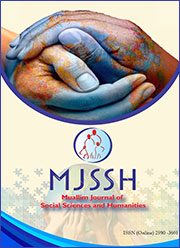

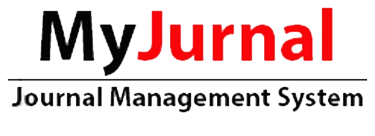


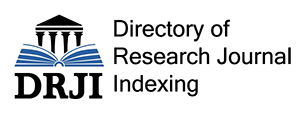
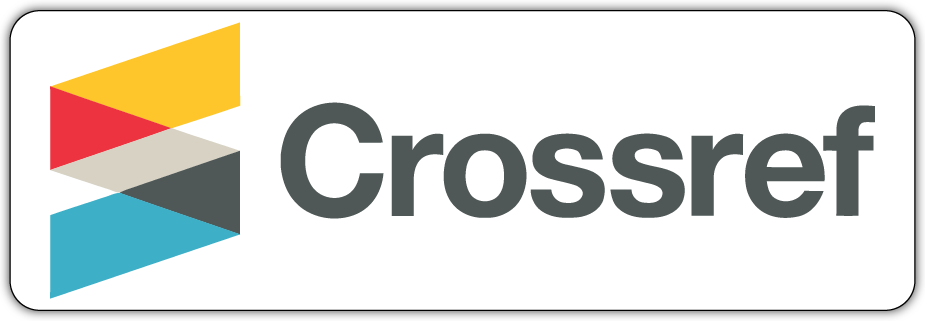
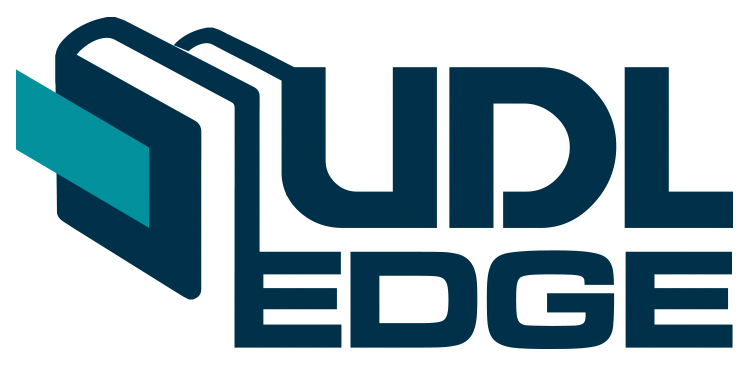





 This work is licensed under a
This work is licensed under a